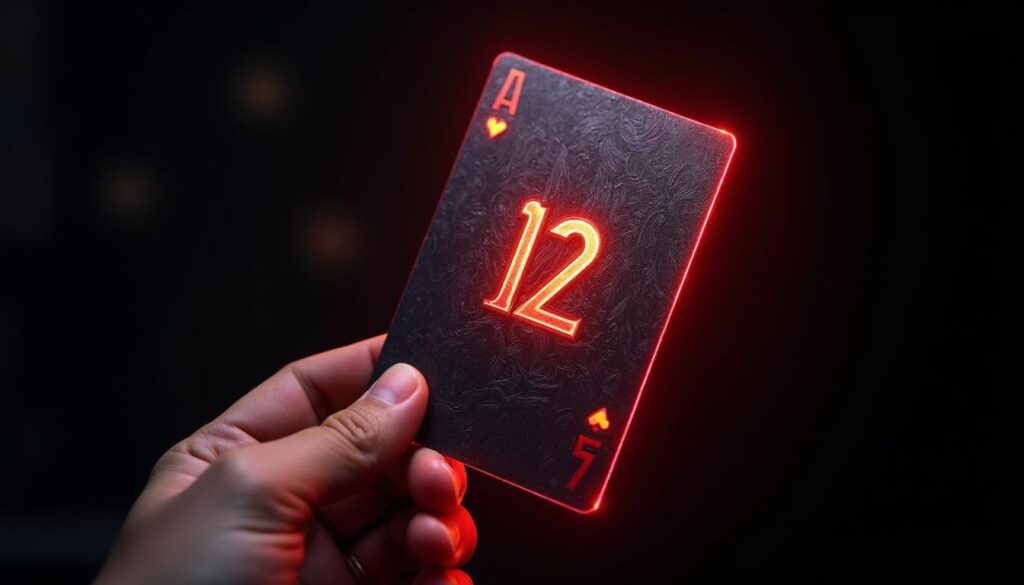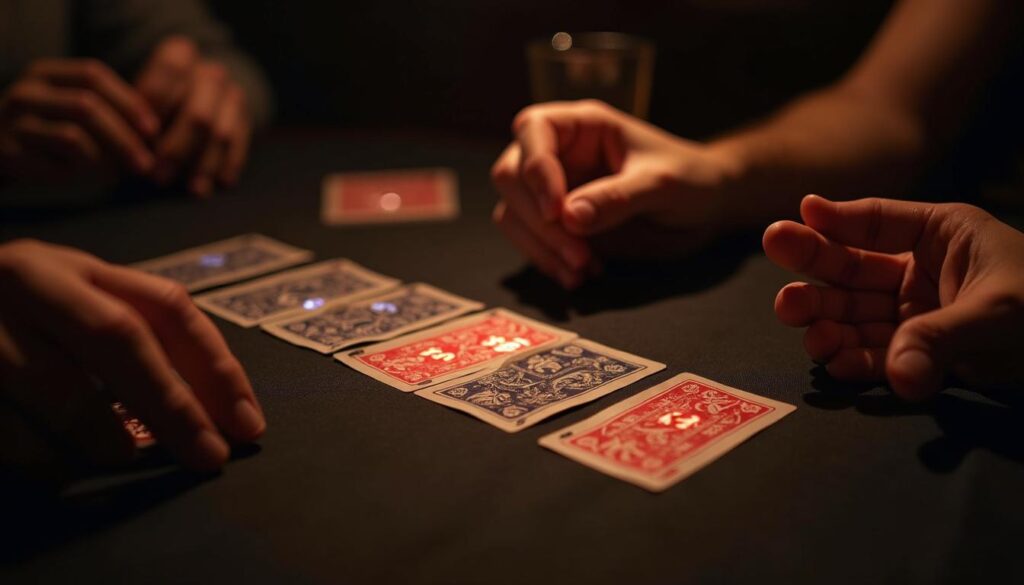Mastering the Art of Press-Your-Luck Flip 7: A Deep Dive into the Rules and Mechanics
As we mark the first anniversary of its release in September 2025, I find myself reflecting on how quickly certain games capture the imagination of players across Britain. Back in 2024, when Eric Olsen’s creation first hit the shelves through The Op Games, it brought a fresh twist to the press-your-luck genre that reminded me of those rainy afternoons in London pubs where simple card draws could turn into hours of tension and laughter. We’ve seen it nominated for the 2025 Spiel des Jahres, a testament to its appeal, and it’s no surprise— with its blend of strategy and chance, it’s become a staple for gatherings here in the UK, where Asmodee distributes it widely. At Spyfall, where our team specialises in dissecting online and offline card games, we’ve spent countless sessions analysing its mechanics, from the probabilistic risks to the interpersonal dynamics it fosters. In this comprehensive piece, we’ll explore every facet, drawing on our expertise to help you not just learn the rules but truly understand why it works so well.

What Makes This Game Stand Out in the World of Card Games?
Before we delve into the specifics, let’s consider the broader landscape. Card games have long been a cornerstone of British leisure, from traditional pursuits like whist in Victorian drawing rooms to modern online variants that echo across apps and virtual tables. This particular title, released in 2024, fits neatly into that tradition while introducing elements that feel innovative yet accessible. Designed by Eric Olsen, who also crafted Booty Dice, it carries a family-friendly rating for ages 8 and up, making it ideal for multigenerational play. With a typical playtime of around 20 minutes and support for 3 or more players—up to virtually unlimited in larger groups—it’s versatile enough for a quick round after dinner or a full evening’s entertainment.
Our analysis at Spyfall reveals that its core appeal lies in the press-your-luck mechanic, akin to blackjack but with a unique twist on duplicates. Unlike games where you chase a numerical target, here the risk comes from avoiding matching numbers, which adds a layer of memory and probability that’s deceptively deep. We’ve noted in our reviews of similar titles that this setup encourages bold decisions, much like the calculated gambles in online poker rooms popular among UK players. The game’s components, including 79 number Deck where each value from 0 to 12 has copies equal to its number (one 0, one 1, up to twelve 12s), seven modifier cards (one each of +2, +4, +6, two +8s, one +10, and one x2), and nine action Deck (three each of Freeze, Flip Three, and Second Chance), total 95 cards in all. This precise composition ensures balanced draws, with higher numbers more likely to appear but also riskier to pursue.
One micro-detail that stands out is the artwork by O’Neil Mabile, which features clean, vibrant illustrations that make the Deck easy to read even in dim pub lighting—a practical nod to real-world play in Britain. Another is the inclusion of two +8 cards, a subtle asymmetry that our team has found influences late-game strategies, as players weigh the odds of drawing that extra boost.
How Do You Prepare for a Round?
Setting up is straightforward, which is one reason it appeals to casual players in the UK, where time is often at a premium. First, gather your group—three is the minimum, but we’ve tested it with up to ten without issue. You’ll need a pen and paper for scoring, as the game doesn’t include a pad, though apps like the Flip 7 Scoreboard (launched in 2024) can handle this digitally if you’re playing online-inspired variants.
The dealer, chosen perhaps by who last won a hand or via a quick rock-paper-scissors, shuffles the deck thoroughly. Deal one card face-up to each player, starting with the person to the left and including yourself. If an action card surfaces here, resolve it immediately—this can lead to players starting with zero to four Pack, adding an early layer of unpredictability. For instance, a Flip Three might force someone to draw extra right away, potentially busting them before the round even begins in earnest.

In our Spyfall sessions, we’ve observed that this initial deal sets the tone. Before: Everyone starts equal. After: Some might have a head start with modifiers, while others face immediate pressure. What it means: It levels the playing field by introducing chaos from the outset, preventing any one player from dominating through sheer luck in later draws.
What Choices Do Players Face Each Turn?
The heart of the gameplay revolves around a simple binary decision: hit or stay. Starting with the player to the dealer’s left, each active participant decides whether to draw another card (hit) or lock in their current hand (stay). Hitting means flipping the top card and adding it to your row—number Pack go in a visible line, modifiers above them, and actions are resolved on the spot.
If you draw a number that matches one already in your row, you bust, scoring zero for the round and setting your Pack aside. This is where the press-your-luck element shines; with fewer low numbers in the deck (only one 1, for example), pursuing high-value cards like 12s increases both potential points and bust risk, as there are twelve 12s available. Our mechanical breakdown shows the probability of busting escalates nonlinearly: with three unique numbers, your odds are low, but by six, every draw feels like a coin flip.
Staying, on the other hand, means flipping your cards face-down—you’re out of the round but safe, banking whatever you’ve accumulated. The round continues until all have stayed, busted, or someone achieves the titular feat: seven unique number Pack, triggering an immediate end and a 15-point bonus for that player.
We at Spyfall appreciate how this mirrors online card games like those on UK platforms, where timing your fold is key. A micro-detail here is that modifiers don’t cause busts—they’re always safe adds, encouraging players to push for just one more if they’ve got a buffer.
How Do Action Cards Change the Dynamics?
Action Pack introduce interpersonal strategy, transforming a solitary risk assessment into a social battle. There are three types, each with three copies, and they’re played immediately upon draw unless specified.
Take the Freeze: When drawn, you choose an active player (including yourself if last one standing) to force into staying. It’s a defensive tool, often used to protect a strong hand from rivals pushing further. In our analyses, we’ve seen it swing rounds, especially in groups of five or more common in British game nights.
The Flip Three compels the target to draw three cards in sequence, resolving each one by one. This can accelerate a player’s progress but heightens bust risk exponentially—imagine drawing a duplicate on the second card, only to have a Second Chance save you for the third. If another action appears during this, it’s held until the trio is complete, then assigned.
Second Chance offers redemption: upon busting with a duplicate number, discard it and the Second Chance to continue. You can hold only one per round; extras get passed to others without one. This card’s utility peaks mid-round, where our probability models show it can double survival odds when holding four or more uniques.
Before introducing actions: The game is pure luck-pushing. After: It becomes a web of alliances and sabotage. What it means: Players must read the table, anticipating when to deploy these to disrupt leaders, much like bluffing in Spyfall itself.

What Role Do Modifier Cards Play in Scoring?
Modifiers are the scoring enhancers, placed above your number row and immune to busting. The +2 through +10 add flat bonuses at round’s end, while x2 doubles your number sum before adding others. Notably, x2 doesn’t affect the 15-point bonus or other modifiers, a rule clarified in the 2025 second edition FAQs to prevent overpowered scores.
In practice, drawing an x2 early encourages aggressive play, as doubling a high sum can catapult you towards the 200-point victory threshold. Our team has calculated the theoretical max per round: summing 12+11+10+9+8+7+6 (63), doubled to 126, plus +10 for 136, and the 15 bonus for 151—achieved rarely, but thrilling when it happens.
A local UK context: With the game’s availability through Asmodee UK since its 2024 launch, we’ve noticed players here adapt modifiers for house rules, like capping x2 in shorter sessions to suit pub time limits.
How Does a Round Conclude and Scores Get Tallied?
The round wraps when no active players remain or the seven-unique milestone is hit. Busted players score zero; others sum their numbers, apply x2 if held, add modifiers, and tack on 15 if applicable. Record totals—first to 200 wins, with ties resolved in extra rounds.
If the deck depletes, shuffle discards from prior rounds (excluding current hands) to continue. This mechanic ensures games don’t stall, a smart design choice for the 20-minute average playtime.
Before scoring: Tension builds with each draw. After: Relief or regret as points are calculated. What it means: It reinforces strategic staying, balancing greed against safety.
What Strategies Elevate Your Play?
Beyond basics, mastery involves probability awareness. Low numbers are scarce, so starting with a 1 limits options but secures uniqueness. Highs like 12 offer points but abound, raising duplicate risks. Our Spyfall breakdowns suggest aiming for four to five uniques early, then evaluating table state— if others are pushing, stay conservative.
Actions add mind games: Save Second Chance for late, use Freeze on point leaders. In larger UK groups, where social deduction echoes games like Werewolf, bluffing intent can force mistakes.
Compare to classics: Unlike blackjack’s 21 cap, here no upper limit exists beyond deck odds, fostering bolder play. Variants we’ve tested include team scoring for online adaptations, extending appeal.

How Has the Game Evolved Since Launch?
Released in 2024, the core rules remain, but the 2025 second edition refined clarifications, like x2’s limitations, responding to community feedback. BGG rankings climbed from under 8,000 in October 2024 to higher by mid-2025, reflecting growing acclaim. No major license ties, but its family rating (8+) aligns with UK standards for accessible entertainment.
A micro-detail: The promotional edition from December 2024 featured linen-finish Pack, differing from retail’s standard, which some collectors in Britain prize for durability.
What If the Deck Runs Out Mid-Round?
Shuffle previous discards, excluding current cards—even busted ones stay out. This keeps momentum, preventing abrupt ends.
How Do You Handle Ties at 200 Points?
Play additional rounds until a sole leader emerges, ensuring fair resolution.
Can Action Cards Cause a Bust?
No, only number duplicates bust—actions and modifiers are safe.
Is There a Maximum Number of Players?
Officially 3+, but practically unlimited; we’ve played with 15 in online simulations without issue.
What Happens If You Draw Multiple Second Chances?
Hold one, pass extras to active players without; discard if none qualify.
In wrapping up, this game exemplifies why press-your-luck endures in British gaming culture—simple to learn, endlessly replayable. At Spyfall, we see it as a bridge between traditional Pack and modern online twists, worthy of its 2025 nomination.